Rain Watch for Aug 29-Sept 4: La Niña likely in final lap of monsoon season
La Niña conditions towards September may bring in colder winter in India and an increase in rainfall towards end of monsoon season. Kharif sowing is close to being complete, led by acreages of rice, coarse cereals and pulses
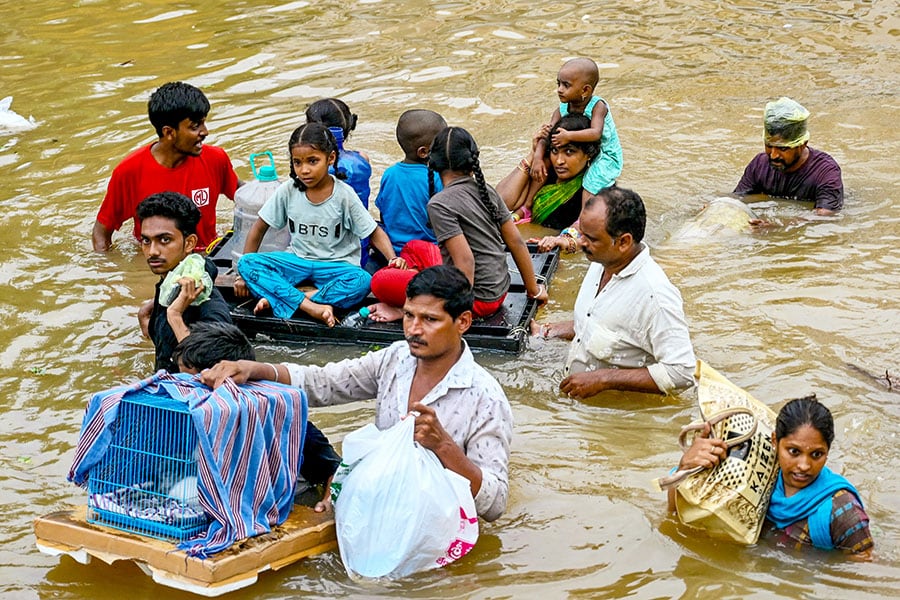 People carry their belongings as they wade through a flooded street after heavy monsoon rains, in Vijayawada on September 2, 2024. - Intense monsoon rains and floods in India's southern states have killed at least 25 people, with thousands rescued and taken to relief camps, disaster officials said on September 2. Image: Changdu Lumburu / AFP
People carry their belongings as they wade through a flooded street after heavy monsoon rains, in Vijayawada on September 2, 2024. - Intense monsoon rains and floods in India's southern states have killed at least 25 people, with thousands rescued and taken to relief camps, disaster officials said on September 2. Image: Changdu Lumburu / AFP
With monsoon season entering its final month, surplus rain showers or above-normal rainfall is likely to continue. However, La Niña conditions are expected towards the end of season, which typically results in cooler temperature and increase in rainfall in India.
In August, monsoon rains were unevenly distributed, with access showers in southern states and Rajasthan. Overall, on a cumulative basis, rainfall surplus increased to 7.3 percent above the long-period average (LPA) as of September 1, shows an analysis by Barclays based on Indian Meteorological Department (IMD) data. This indicates a rise of rainfall surplus from 5 percent in the preceding week.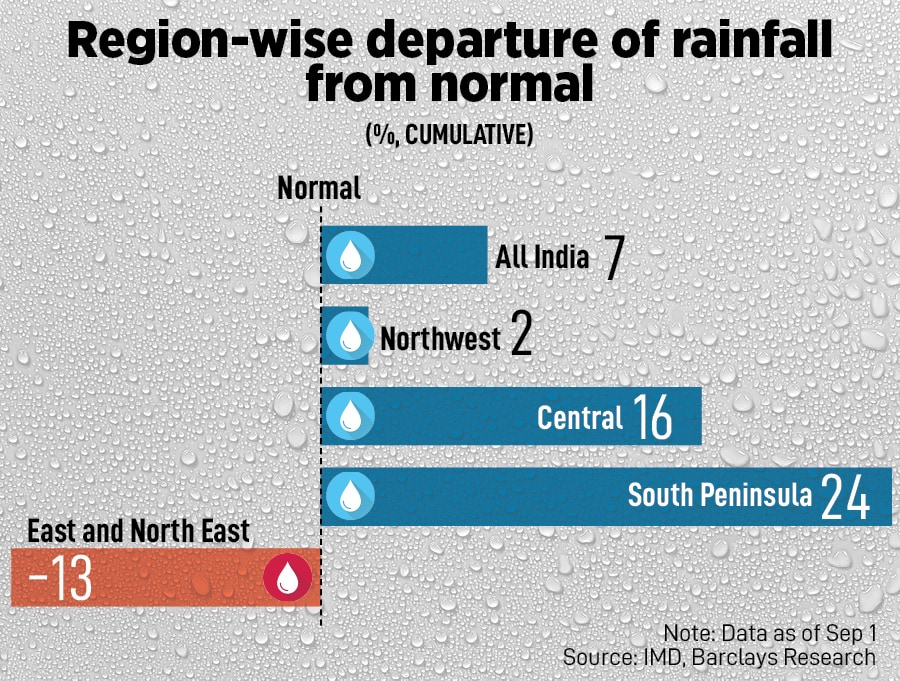
In August, rainfall was largely normal to below normal, barring excess rains in southern states and Rajasthan. The excess rainfall was mostly concentrated in western and select northwestern states.
IMD forecasts monthly rainfall in September to be most likely above normal. However, in certain regions like extreme north India, many parts of south Peninsular India, and most parts of northeast India normal to below normal rainfall is expected in September.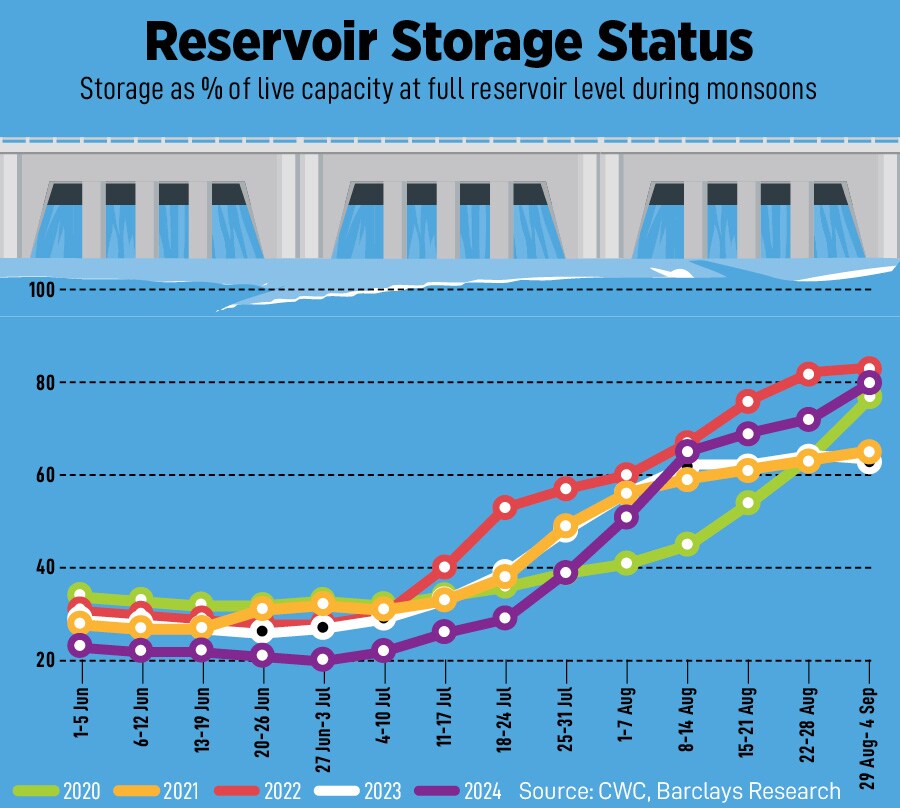
IMD also sees above normal minimum temperatures over most parts of the country, except for some isolated pockets of northwest India, foothills of Himalayas and south Peninsular India. In the regions mentioned, normal to below normal minimum temperatures are expected as per IMD.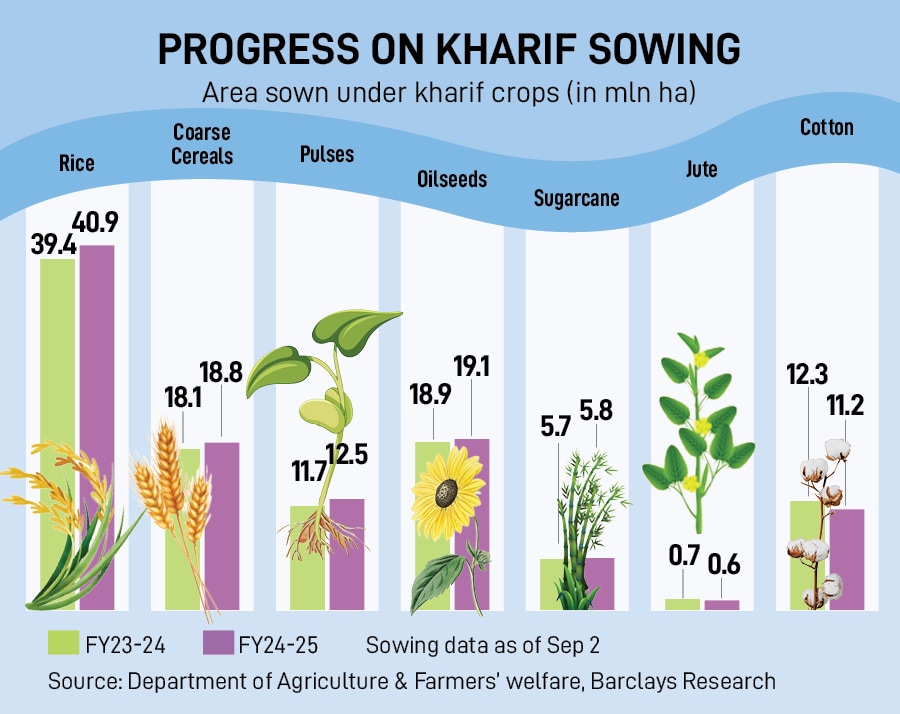
However, IMD has warned of higher likelihood of La Niña conditions developing during end of monsoon season. “At present, neutral Indian Ocean Dipole (IOD) conditions are prevailing over the Indian Ocean. Most global climate models suggest that neutral Indian Ocean Dipole (IOD) conditions are likely to continue during the remaining period of the monsoon season,” says IMD.
Also read: Rain Watch for Aug 1-7: Above-average showers, floods and landslide in few regions
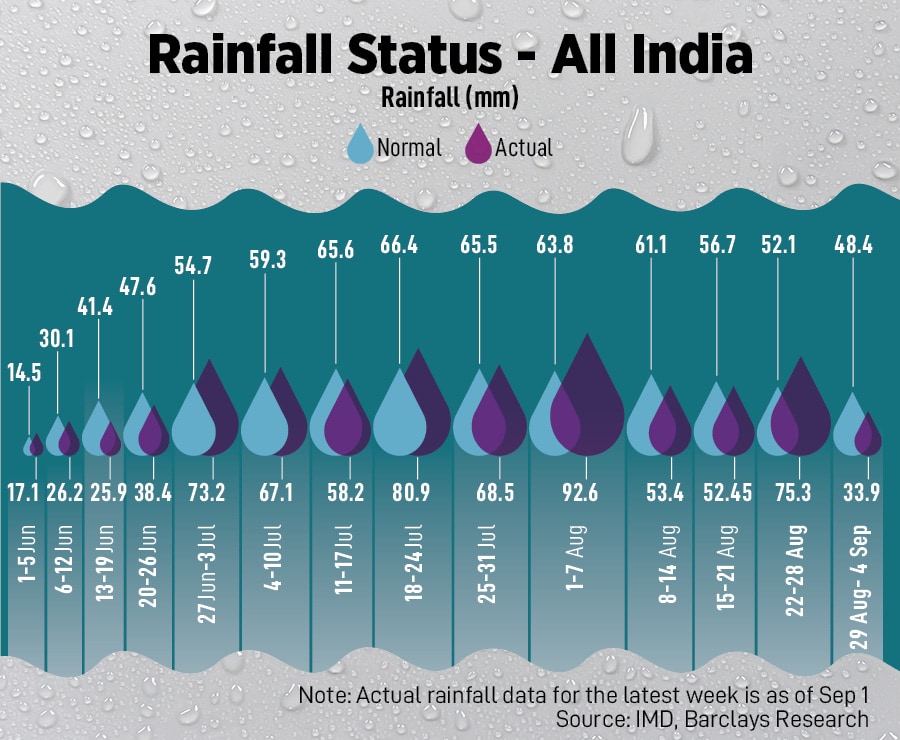
The Indian National Centre for Ocean Information Services expects a La Niña to develop from November onwards. While the two agencies’ timelines vary, both indicate a delay from earlier predictions of La Niña developing from July-August.
Meanwhile, Kharif sowing is close to complete, with the area sown at 97 percent of normal. Overall, the area sown this year is about 1.9 percent higher year-on-year (YoY), driven by increases in acreage of rice, coarse cereals, and pulses while cotton sowing still remains lower.
According to Barclays, the sowing pattern is largely along historical trends as rice sowing is in more than 100 percent of normal area in Uttar Pradesh and Punjab, the two high yield states, while it is at 97 percent in West Bengal, where pace of sowing picked up only in August.
For pulses, the area sown is 90 percent of normal, lower than national average, but in line with 2022 levels. In 2023 at this time, sowing was at 84 percent of the normal acerage impacted by deficient rains sowing. Sowing in cotton has lagged throughout the season, and is unlikely to close the gap with last year. 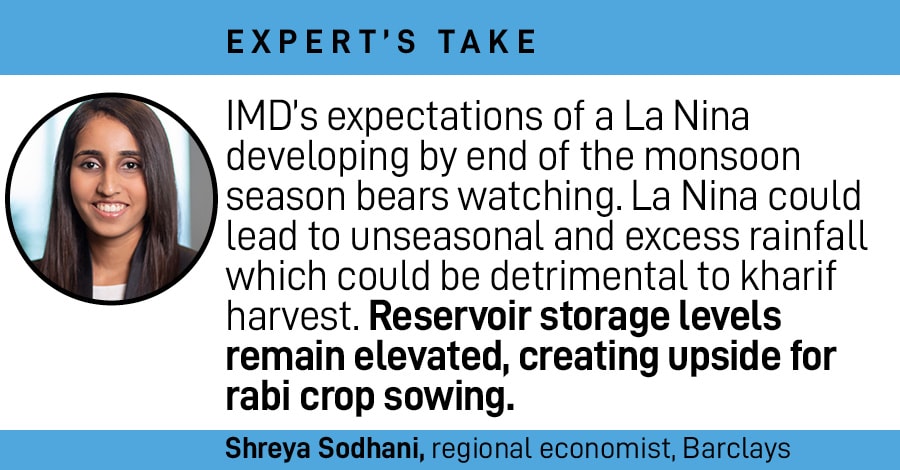
Reservoir storage levels are elevated and may close the gap with 2022, a La Nina year, if the current rainfall pattern persists, says Barclays. Storage in reservoirs increased to 80 percent of total capacity as of 29 August. This translates into 126 percent of the live storage level of the year-earlier period and 119 percent of normal storage.














